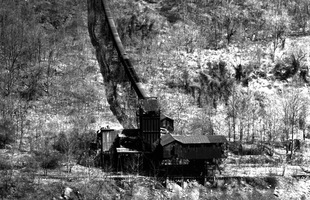 | Back to e-WV
| Back to e-WV
 The West Virginia Encyclopedia
The West Virginia Encyclopedia
 | Back to e-WV
| Back to e-WV
 The West Virginia Encyclopedia
The West Virginia Encyclopedia


























Fayette County is located in south-central West Virginia, north of Beckley. Named for the Marquis de Lafayette, Fayette County was formed by the General Assembly of Virginia on February 28, 1831.
Fayetteville was originally called Vandalia because of its location on Abraham Vandal’s farm. It became the seat of Fayette County in 1837, and the name was later changed to Fayetteville.
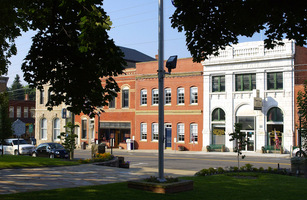
Gauley Bridge is located at the picturesque confluence of the Gauley and New rivers, where the two streams join to form the Kanawha River.
Surrounded by the best farmland in the county, Oak Hill developed as a trading center for local farmers before the coming of the railroad.
Thurmond, West Virginia’s best-known boom town, straddled the Chesapeake & Ohio Railway deep in the New River Gorge.
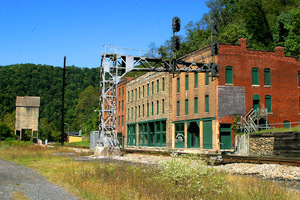
The New River flows northward from North Carolina, across Virginia, and into West Virginia. It joins with the Gauley River to form the Kanawha River at Gauley Bridge.
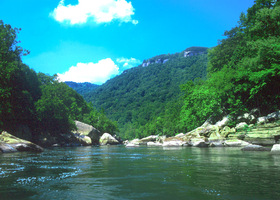
The Kanawha River begins at Gauley Bridge and continues northwest on a meandering course of 97 miles to the Ohio at Point Pleasant.
The Gauley River rises on Gauley Mountain in western Pocahontas County and drops nearly 4,000 feet along the 104-mile journey to its juncture with the New River.
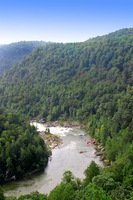
The New River Gorge Bridge is one of West Virginia’s best-known landmarks. It is the third-highest bridge in the United States. On the third Saturday of October, thousands of people gather on the span for Bridge Day.
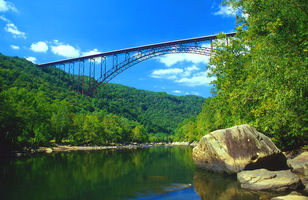
Camp Washington-Carver was the first 4-H camp for African-Americans in the country, and its great chestnut lodge is the largest log structure in West Virginia.
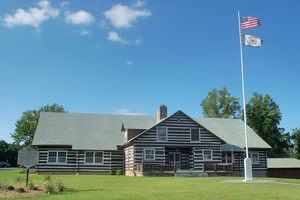
Babcock State Park was built as a public works program during the Great Depression and opened on July 1, 1937. The focal point of the part is Glade Creek Mill.
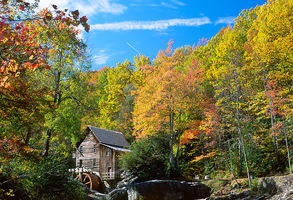
The Summit Bechtel Family National Scout Reserve is a high-adventure camp for Boy Scouts. The Reserve, located on 10,600 acres of the New River Gorge near Mount Hope, will also be the home of the National Scout Jamboree.
The Whipple Company Store was built by coal operator Justus Collins in the early 20th century. It was the commercial and social center for the mining town of Whipple and surrounding communities.
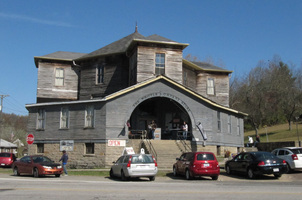
The Mount Olive Correctional Complex, which opened in February 1995, houses maximum security prisoners.
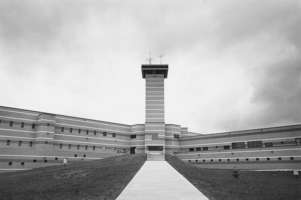
Contentment is a historic house in Ansted that was built about 1830. In 1874, the house was purchased by Col. George Imboden.
Kanawha Falls is the state’s largest waterfall. The historic Glen Ferris Inn overlooks the falls. Glen Ferris has hosted travelers since at least 1839, when it was a popular stagecoach stop on the James River & Kanawha Turnpike, now U.S. 60.
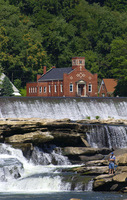
Hawks Nest State Park occupies cliffs, streams, and a lake formed by damming the New River in 1934. The park sits on both sides of U.S. 60, just west of Ansted.
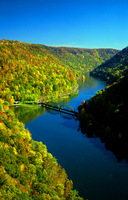
Montgomery, located in Fayette and Kanawha counties, is home to West Virginia University Institute of Technology.
One of only three national rivers, the New River Gorge National River was established by Congress on November 10, 1978. The park was created for the purpose of conserving and interpreting outstanding natural, scenic, and historic values and objects.

From an elevation above the New River Gorge at about 2,200 feet, Sewell Mountain increases eastward over the next 10 to 12 miles to 3,200 feet elevation. At this point Sewell Mountain appears as a ridge about three-quarters of a mile wide and eight miles long. In the Sewell Mountain Campaign in 1861, Gen. Robert E. Lee established his headquarters on the summit, and it was here that he first saw Traveller, the great war horse he later purchased for $200 in Confederate currency.
The Midland Trail is the national east-west automobile route constructed in the 1930s, designated as U.S. 60 and crossing the center of America from the Chesapeake Bay to the Pacific Ocean. In West Virginia, the Midland Trail was the first state-maintained highway.
The Meadow River is a major tributary of Gauley River. It has its headwaters along the Greenbrier-Summers county line, in the high mountains northwest of Alderson.
The West Virginia Turnpike, the state’s only toll road, runs from Charleston to Princeton. Three “Glass House” service areas built along the turnpike were replaced by modern travel plazas in the 1990s.
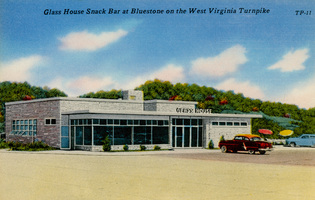
The company town of Kaymoor evolved from a mining camp in 1899 into an industrial village. It was named after James Kay, its first superintendent.
Plum Orchard Lake, constructed in 1962, provides 6.5 miles of shoreline and has a maximum depth of 40 feet. The surrounding Plum Orchard Lake Wildlife Management Area encompasses 3,201 acres.
Nuttallburg was once a thriving New River Gorge coal town.
